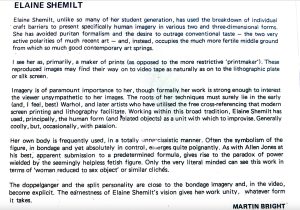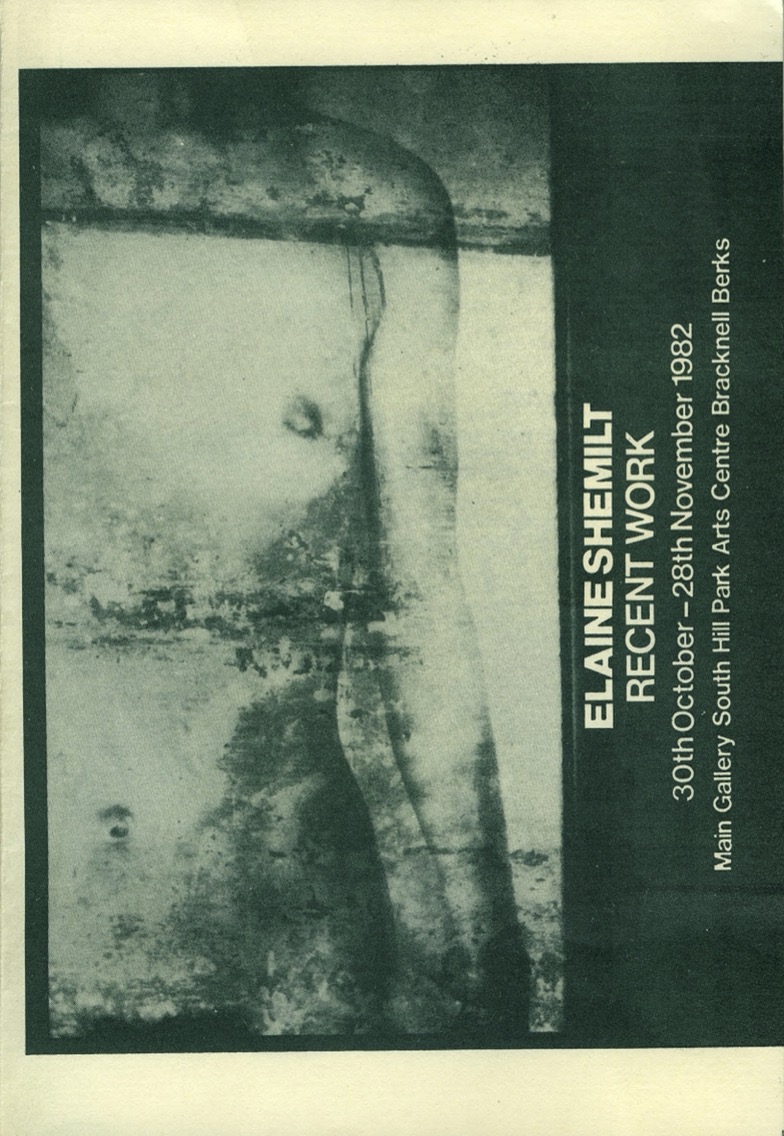Women Soldiers (1982)

Creator:
Shemilt, Elaine-
This work is part of the rewind archive.
Duration: 6m
Year: 1982
Original formats:3/4" U-Matic
First exhibited: 1982 South Hill Park Arts Centre Bracknell, UK
Women Soldiers addresses several feminist issues. The main theme of the video is the role of women in the military forces but it is also a starting point for Shemilt to widen her prospective to a more general critique of how women are represented by media and society and their role and status.
The viewer is guided in this reflection by several voice-over traces. The first is a script pillaged by Shemilt from a military recruitment campaign and read by her friend the artist June Raby, which with subtle irony and a critical approach describes the ‘requirements’ for an unspecified job (that from the images and the title the viewer can assume is in the army). A second sound track is a fake infomercial about skin rejuvenation, read by a male performer. Shemilt also employs some sound recordings of bombing in Beirut from 1981.
These issues are also addressed through the use of a series of photographs shot by Shemilt at a British army training camp and of the military paraphernalia (including weapons and gas masks), photo-documentation and prints from Shemilt’s performances, and images from beauty products’ commercial adverts.
The use of strong dramatic imaginary and the sound of shooting are a clear appeal of the artist for peace.
Women Soldiers was produced and first screened at South Hill Park Arts Centre, Bracknell, UK in 1982.
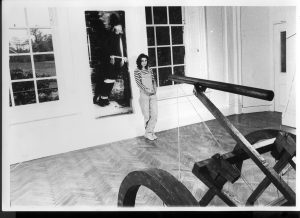
Elaine Shemilt at the opening of her One-Person exhibition, South Hill Park, 1982. Featuring multi media installation “Women Soldiers” screen print behind the artist; foreground Women Soldiers (sculpture); included the video work of the same name. 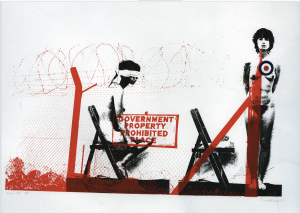
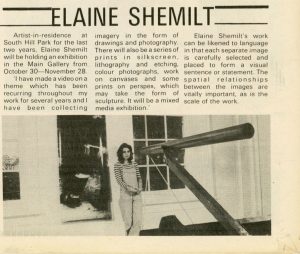

-
-
Quotes:
Elaine Shemilt, unlike so may of her student generation, has used the breakdown of individual craft barriers to present specifically human imagery in various two and three dimensional forms. She has avoided puritan formalism and the desire to outrage conventional taste – the two very active polarities of much recent art – and, instead, occupies the much more fertile ground from which so much good contemporary art springs.
I see her, as primarily a maker of prints (as opposed to the more restrictive ‘printmaker’). These reproduced images may find their way on to video tape as naturally as on to the lithographic plate or silk screen.
Imagery is of paramount importance to her, though formally her work is strong enough to interest the viewer unsympathetic to her images. The roots of her technique must surely lie in the early (and, I feel, best) Warhol, and later artists who have utilised the free cross-referencing that modern screen printing and lithography facilitate. Working within this broad tradition, Elaine Shemilt has used, principally, the human form (and related objects) as a unit with which to improvise. Generally cooly, but occasionally, with passion.
Her own body is frequently used, in a totally un-narcissitic manner. Often the symbolism of the figure, in bondage and yet absolutely in control, emerge quite poignantly. As with Allen Jones at his best, apparent submission to a predetermined formula, gives rise to the paradox of power wielded by the seemingly helpless fetish figure. Only the very literal minded can see this work in terms of ‘woman reduced to sex object’ or similar cliches.
The doppelgänger and the split personality are close to the bondage imagery and, in the video become explicit. The earnestness of Elaine Shemilt’s vision gives her work unity, whatever form it takesMartin Bright, October 1982 from the catalogue for “Elaine Shemilt- Recent Work’, South Hill Park Arts Centre Bracknell, UK
